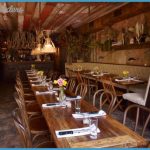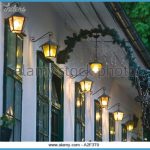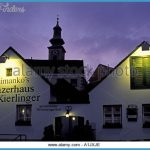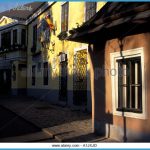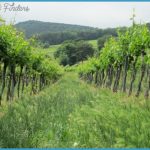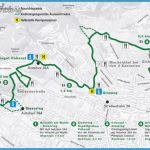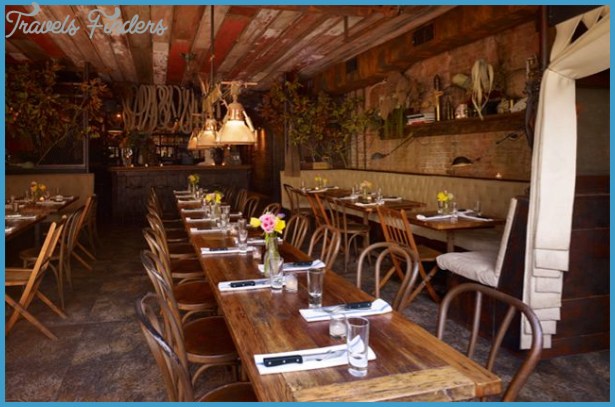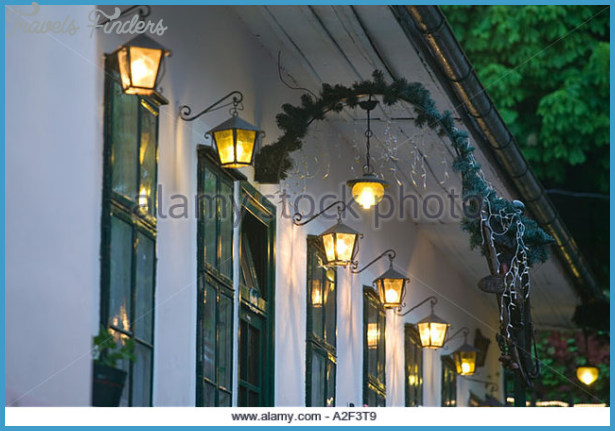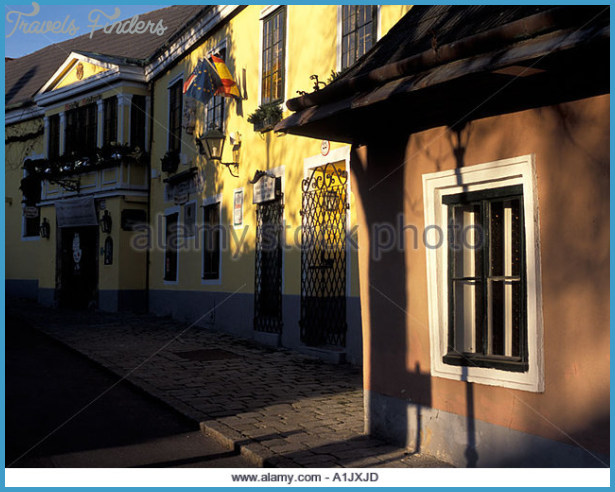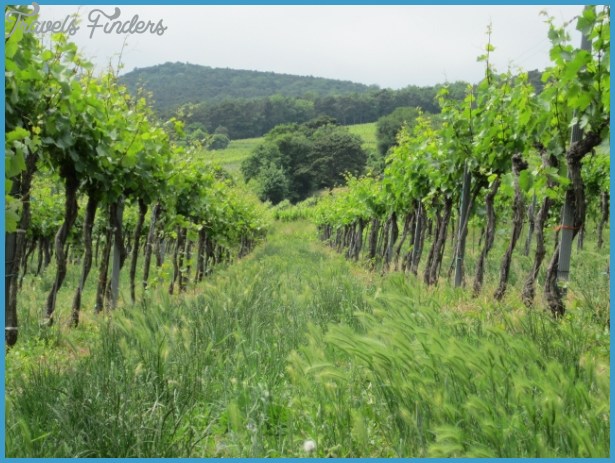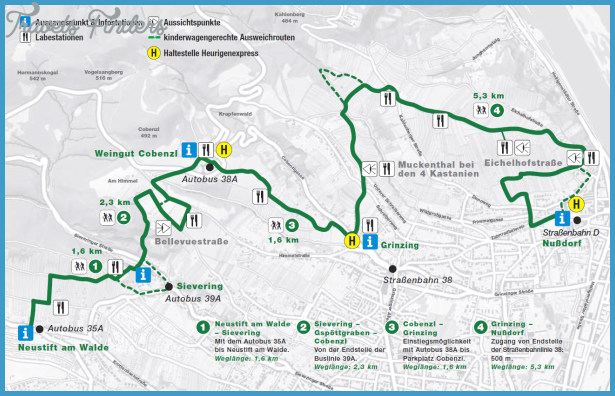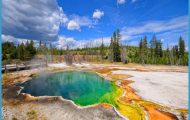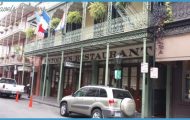HEURIGEN (WINE TAVERNS)
Heurigen, marked by a hanging branch of evergreen at the door, sell wine and savory Austrian buffet-style delicacies. The wine, also called Heuriger, is from the most recent harvest and is typically grown and pressed by the owner himself. Good Heuriger is white, fruity, and full of body Griiner Veltliner is a good representative of the variety; avoid reds. G ‘spritzer (wine and soda water, served separately, then mixed) is a popular way of enjoying Heuriger. Half of the pleasure of visiting a Heuriger, however, comes from the atmosphere. Worn picnic benches and old shade trees provide an ideal spot to con verse, or listen to Schrammelmusik (sentimental folk songs played by elderly musicians). The buffets make for simple, inexpensive meals. For traditional fare, try Brattfett or Liptauer, a soft, paprika-fla vored cheese served on Schwarzbrot (black bread).
Open during summer, Heurigen cluster in the northern, western, and southern Viennese suburbs, where the grapes grow. The most famous region, Grinzing, in district XIX, produces a uniquely strong wine. Unfortunately, that’s where the tour buses go; you’ll find better atmosphere and prices in the hills of Sievering, Neustift am Walde (both in district XIX), and Neuwaldegg (in XVII). Authentic, jolly Heuri gen abound on Hochstr. in Perchtoldsdorf, southwest of the city. To reach Perch- toldsdorf, take U4 to Hietzing and tram #6 to Rodaun. Walk down Ketzerg. until Hochstr. and continue for a few minutes. True Heuriger devotees make the trip to the celebrated village of Gumpoldskirchen. Take the S-Bahn from the Siidbahnhof. Most vineyard taverns are open daily from 4pm to midnight.
13 Buschenschank Heinrich Niersche, XIX, Strehlg. 21. Take U6 to Wahringerstr. then tram #41 to Potzleing. Walk up Potzleing. until it becomes Khevenhuller Str. and turn right on Strehlg. An oasis of green grass and cheerful voices in a quiet neighborhood. WeiBe G’spritzter (white wine spritzer) ‚1.45. Open M and W-Su 3pm-midnight.
13 Zum Krottenbach’l, XIX, Krottenbachstr. 148. U6 to NuBdorferstr. then bus #35A (dir.: Salmannsdorf) to Kleingartenverein. A traditional atmosphere, where everything is made of gnarled wood. Larger but more touristy and family-oriented than Buschen schank. 0.25L of wine about ‚2. Open daily 3pm-midnight.
Weingut Heuriger Reinprecht, XIX, Cobenzlg. 22. Take U4 to Heiligenstadt then bus #38A to Grinzing. Schrammel musicians stroll from table to table under the ivy trellis. In early June, try Frische Erdbeerbowle (sparkling wine and strawberries). Open Mar.-Nov. daily 3:30pm-midnight. AmExMCV.
Vienna’s streets are by turns stately, cozy, scuzzy, and grandiose; expect con trasts around every comer. Don’t miss the Hofburg, SchloB Schonbrunn, SchloB Belvedere, or any of the buildings along the RingstraBe. To wander on your own, grab the brochure Vienna from A to Z (with Vienna Card ‚4) from the tourist office. The range of available tours is overwhelming there are 42 themed walking tours alone, detailed in the brochure Walks in Vienna. Contact Vienna-Bike, IX, Wasag. f 319 12 58), for bike rental (‚5) or cycling tours (‚20). Bus tours (from ‚30) are given by Vienna Sightseeing Tours, III, Stelzhamerg. 411 (712 46 83), and Cityrama, I, Borgeg. 1. (534 13).
INSIDE THE RING
District I is Vienna’s social and geographical epicenter; with its Romanesque arches, Gothic portals, Jugendstil apartments, and modem Haas Haus, it’s also a gallery of the history of aesthetics.
STEPHANSPLATZ, GRABEN, AND PETERSPLATZ Right in the heart of Vienna, this square is home to the massive Stephansdom (St. Stephen’s Cathedral), Vienna’s most treasured symbol. For a view of Vienna, take the elevator up the North Tower or climb the 343 steps of the South Tower. (North Tower open Apr.-June and Sept.- Oct. daily 8:30am-4pm. ‚3.50. South Tower open daily 9am-5:30pm. ‚2.50.) Downstairs, skeletons of thousands of plague victims fill the catacombs. The Gruft (vault) stores all of the Habsburg innards. (Tours M-Sa every 30min. 10-ll:30am and l-4:30pm, Su and holidays l:30-4:30pm. ‚3.) From Stephanspl. follow Graben for a landscape of Jugendstil architecture, including the Ankerhaus (#10), Otto Wagner’s red-marble Grabenhof, and the underground public toilet complex designed by Adolf Loos. Graben leads to Petersplatz and the 1663 Pestsaiile (Plague Column), which was built in celebration of the passing of the Black Death. (U1 or 3 to Stephanspl.)

